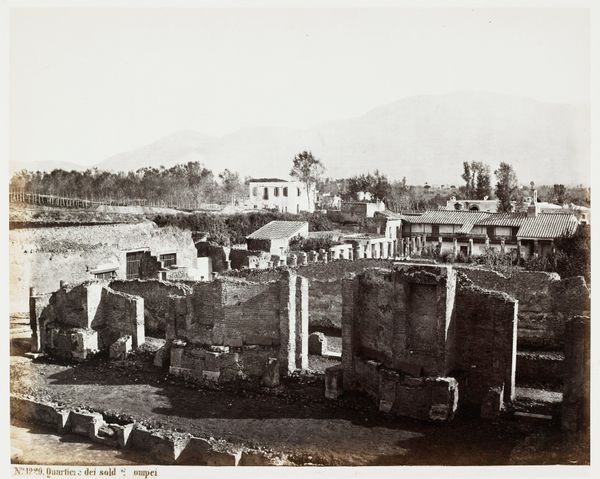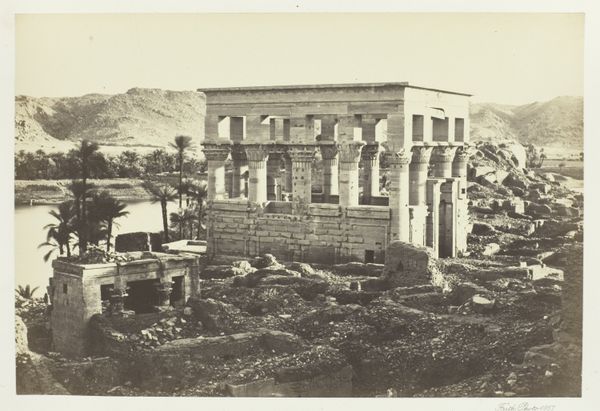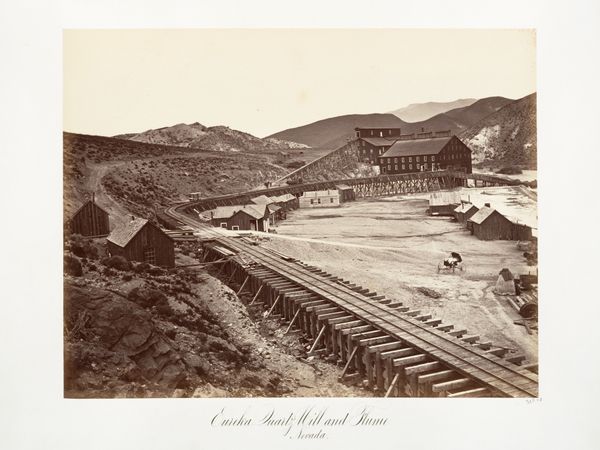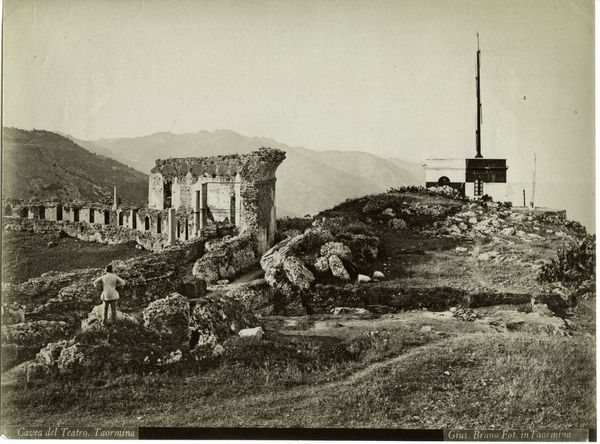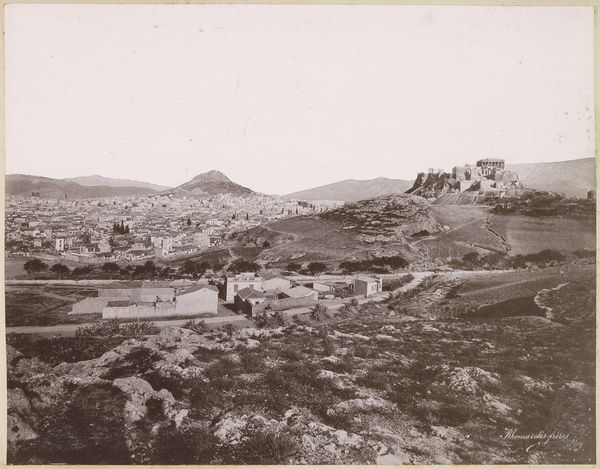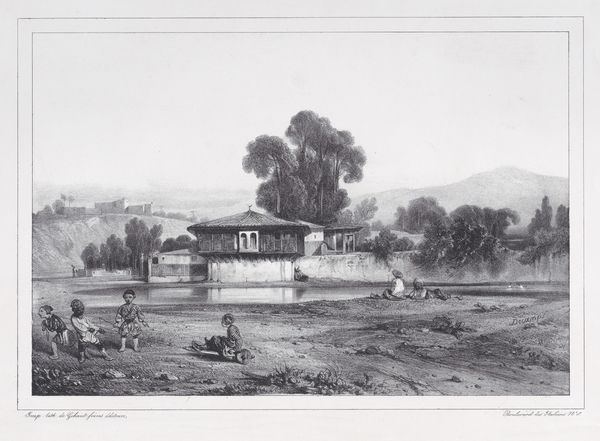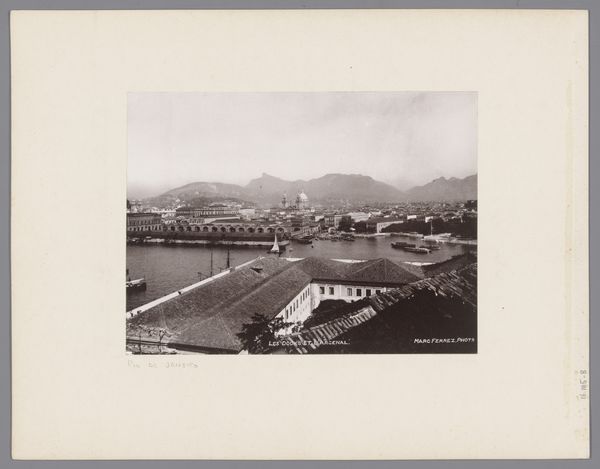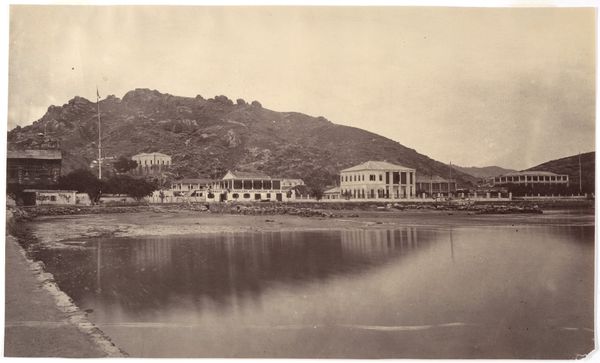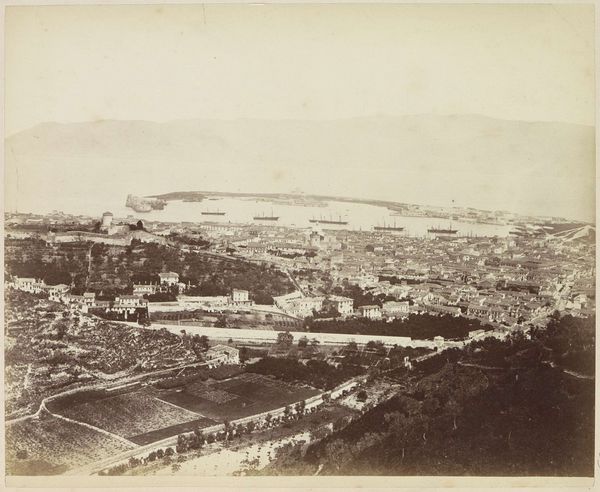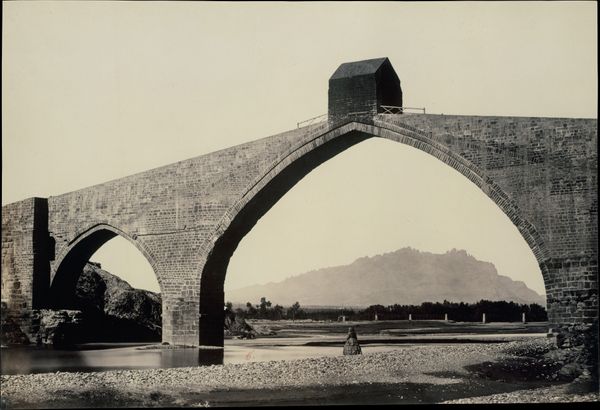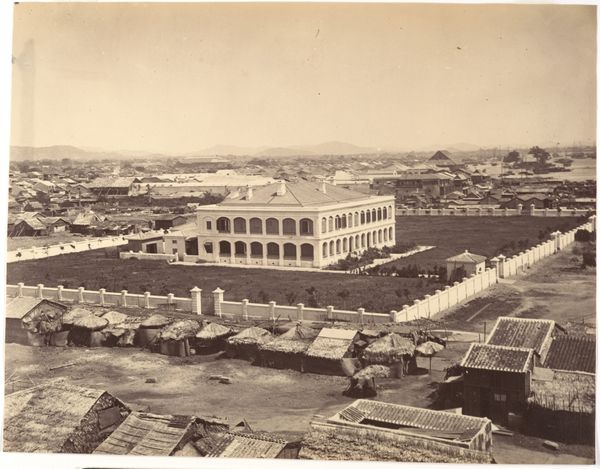
photography, gelatin-silver-print
#
landscape
#
outdoor photography
#
photography
#
orientalism
#
gelatin-silver-print
#
cityscape
#
realism
#
building
Dimensions: Image: 7 1/2 × 10 1/16 in. (19 × 25.5 cm)
Copyright: Public Domain
Curator: Ah, a gelatin-silver print from 1869: John Thomson's "View of Amoy," a somewhat stately if not imposing scene. It almost whispers a hushed history of colonialism. Editor: That's my initial feeling, too! It’s visually quite stunning, a very careful composition of the light, the land meeting the harbor, and that structure—imposing is the perfect word—but the longer I look, the more conflicted I feel. Is this about trade? Domination? Vacation? Curator: All of those and more, I suspect! The high vantage point immediately establishes a sense of surveying, of possession. The architecture in itself appears rather out of place when framed against its physical geography. Editor: Precisely! It's perched on this hill like a crown—isolated, yet undeniably commanding the space. The contrast between the cultivated structure and the natural, almost rugged landscape feels quite intentional, highlighting the disruption colonialism invariably brings. Do you see how even the distribution of light seems calculated to keep that division evident? Curator: It’s quite interesting to me that the lighting emphasizes the scale, especially relative to its surroundings, as if the landscape provides an organic, physical context. Editor: It is powerful how the gaze travels, though. We're drawn past the European building towards the ships in the harbor, perhaps suggesting where true power resided. A visual path directing the gaze of the western observer to those maritime trading ports from which influence can extend into unseen locales. Curator: An act of observing becomes almost like one of imprinting power, perhaps? As if Thomson's lens actively participated in, rather than merely documented, that historical moment. Makes one pause to think about photographic representation, then and now. Editor: Absolutely. By framing Amoy this way, Thomson solidifies a certain colonial narrative. But how much does this kind of orientalist vision of Asia as simultaneously exotic, subdued, and awaiting ‘progress,’ persist in visual media today? That’s where the image really gets under my skin. Curator: It definitely strikes a poignant chord for contemporary viewers like ourselves, yes. Photography, in essence, captured the visible assertion of colonial desires, leaving its indelible imprint to echo through time. Thanks for sparking that train of thought.
Comments
No comments
Be the first to comment and join the conversation on the ultimate creative platform.
